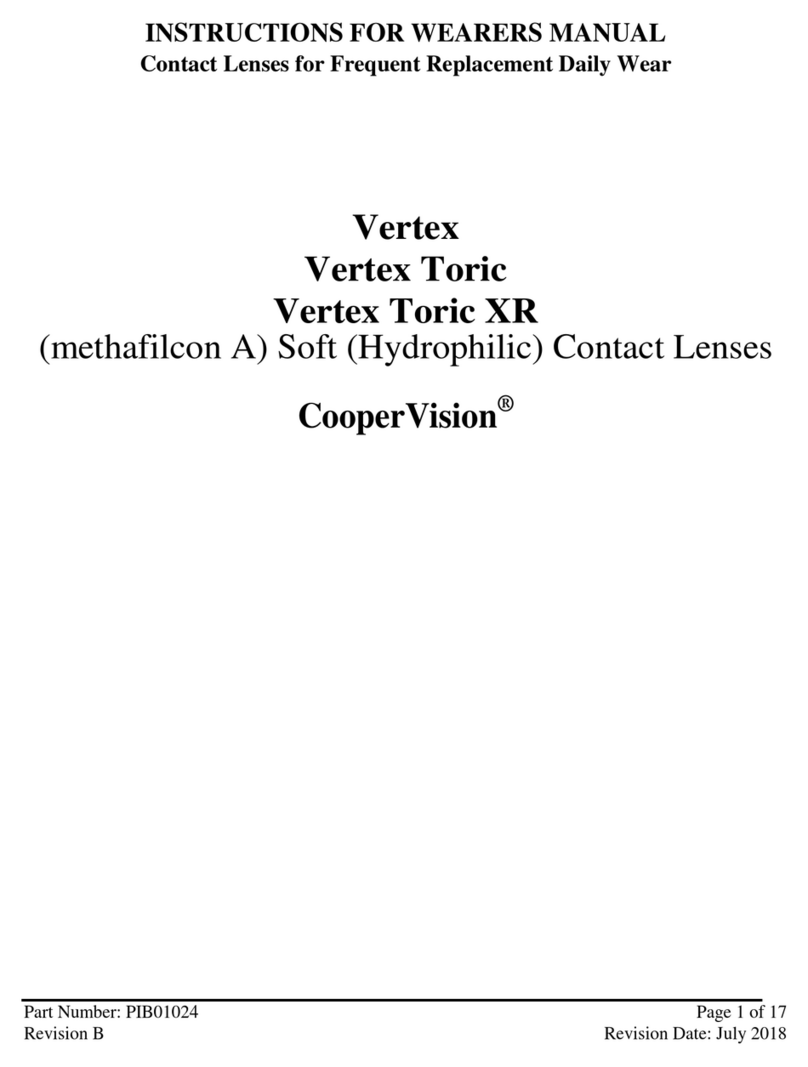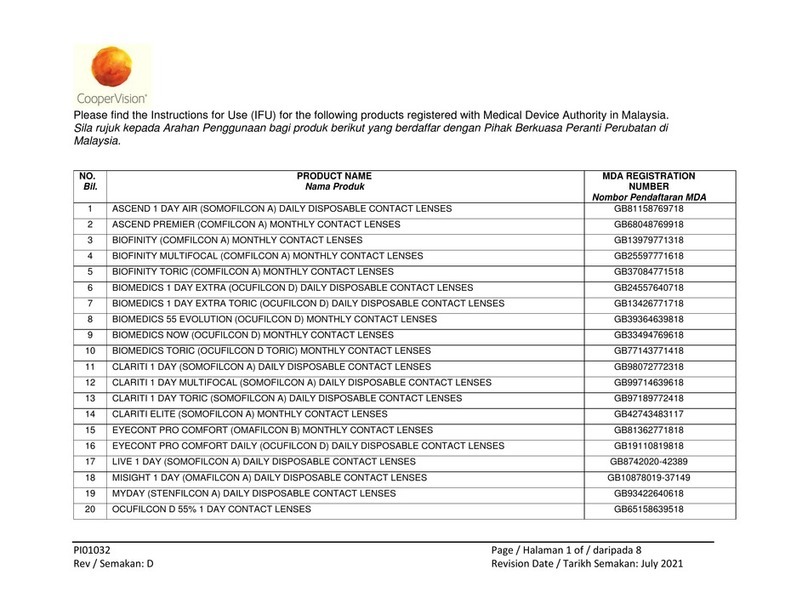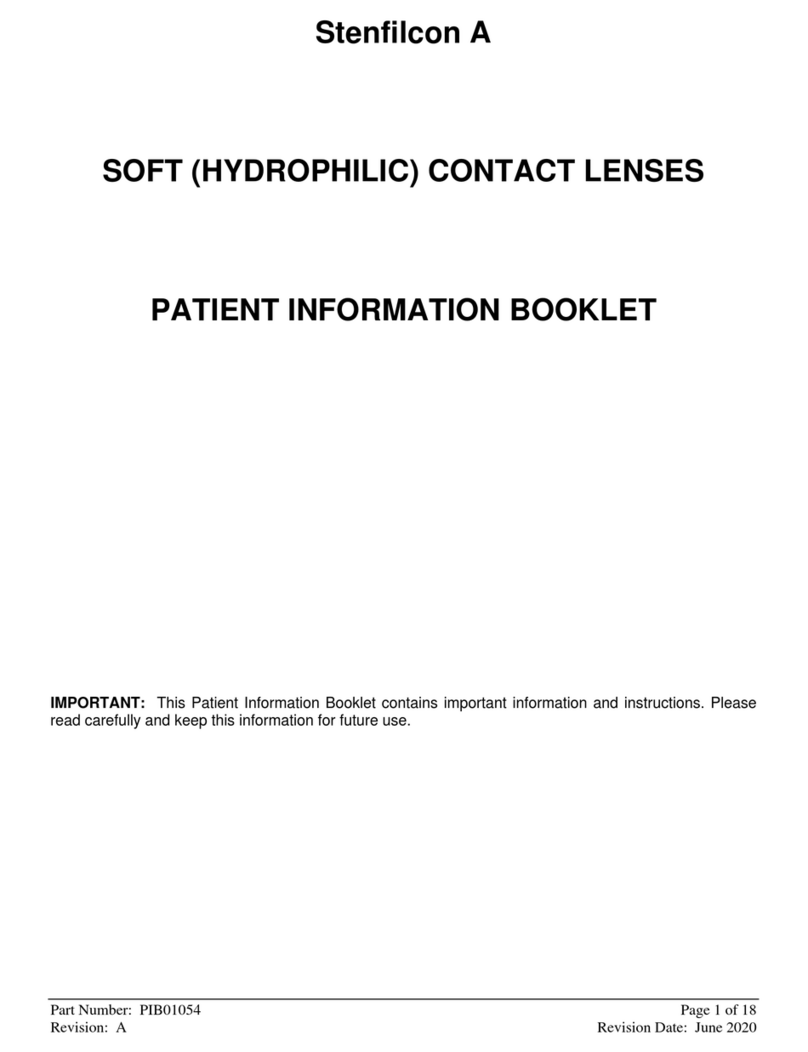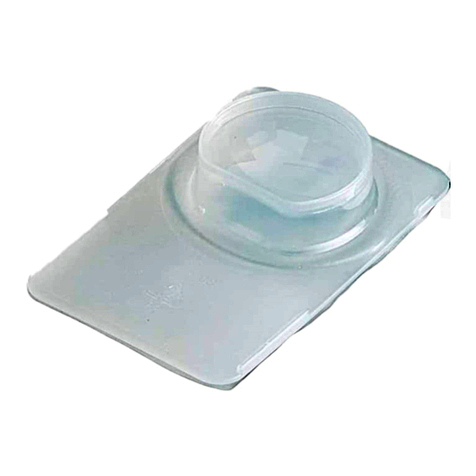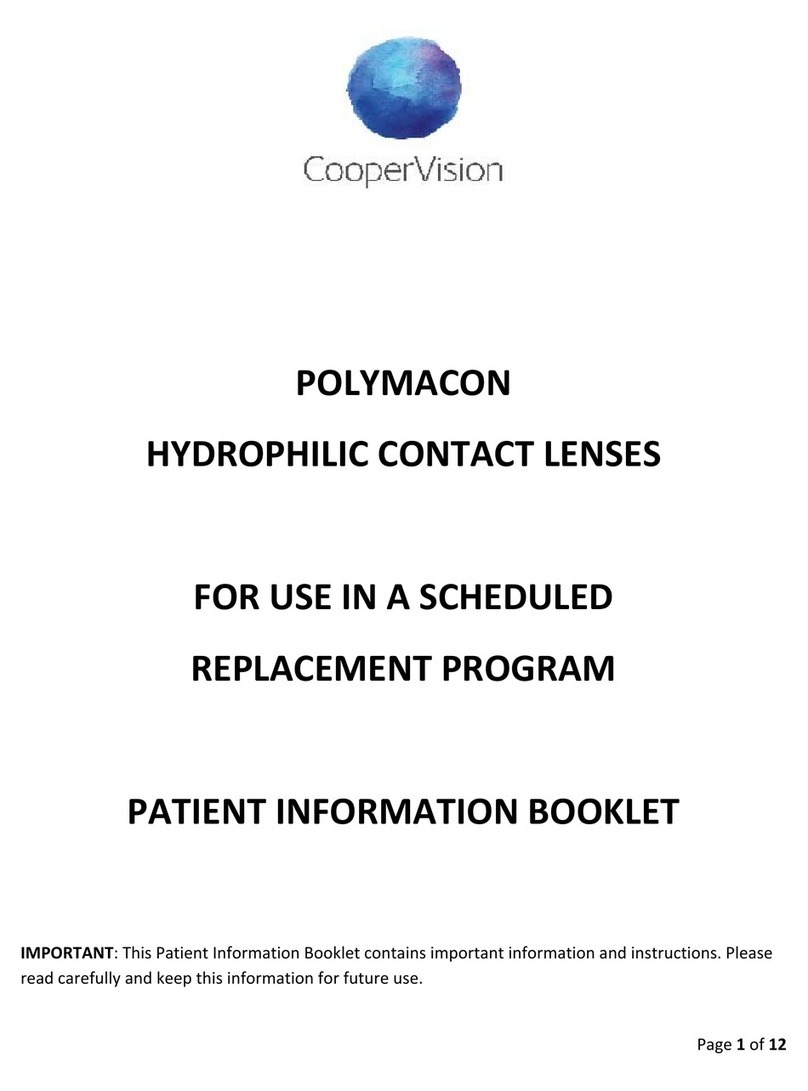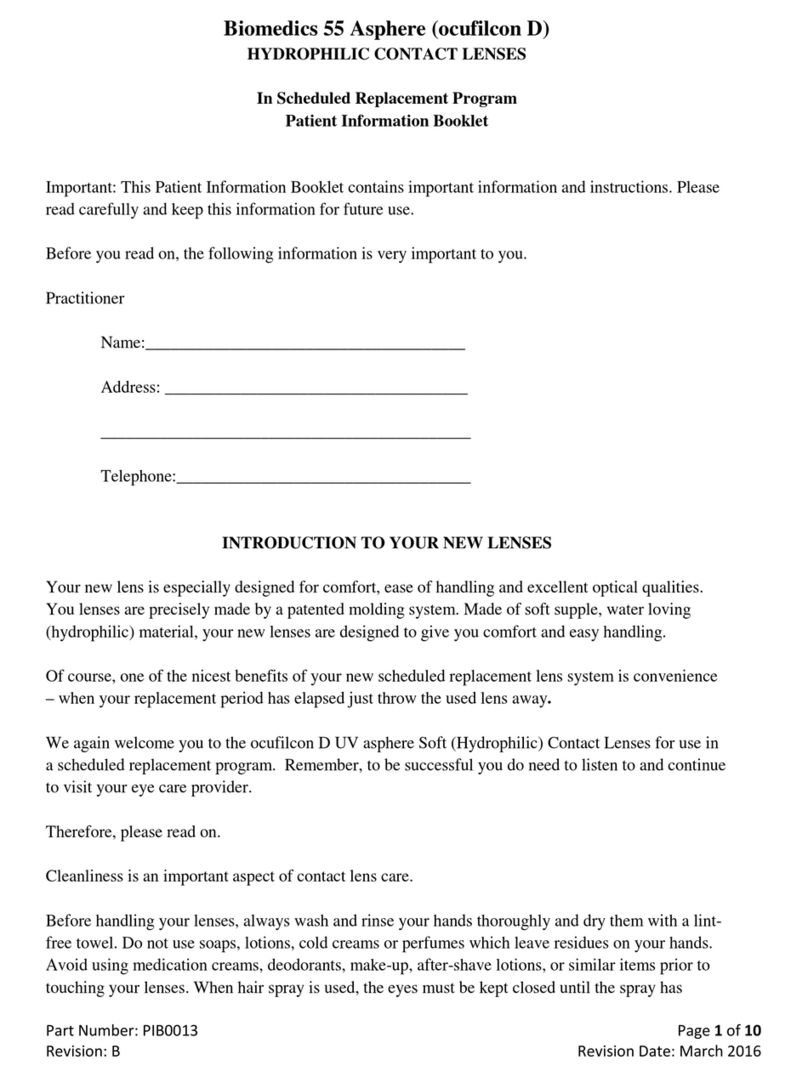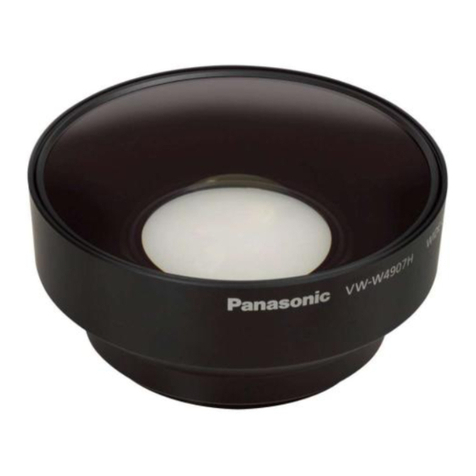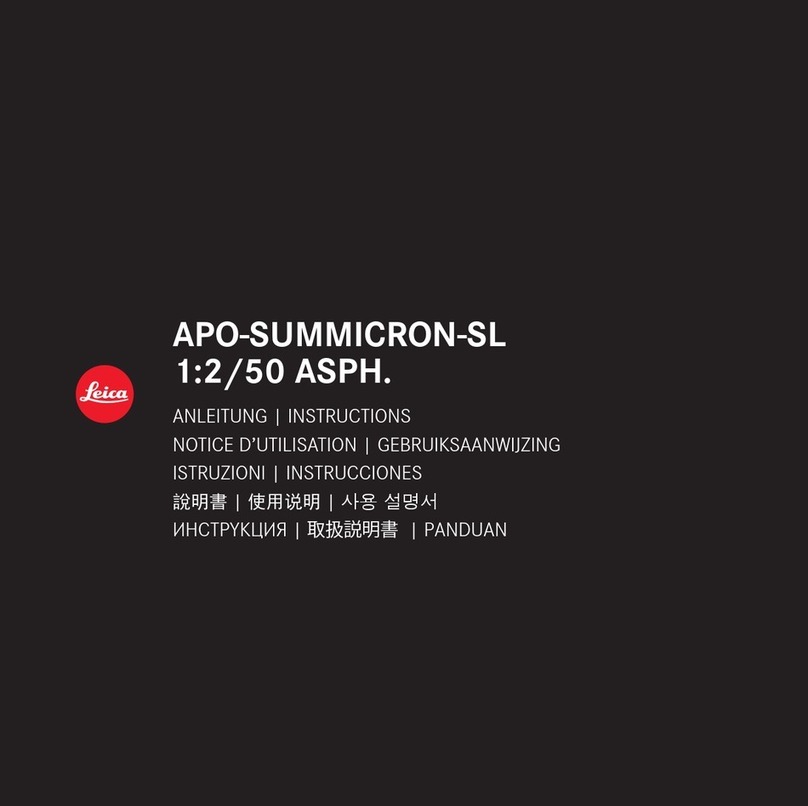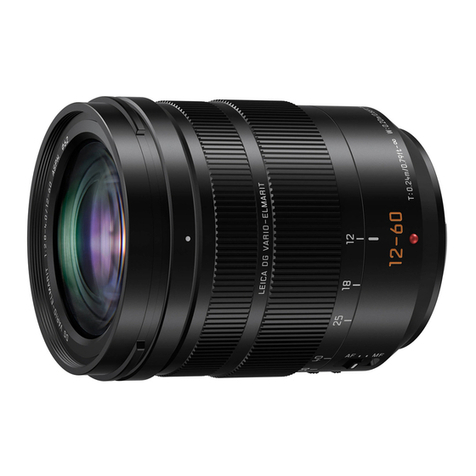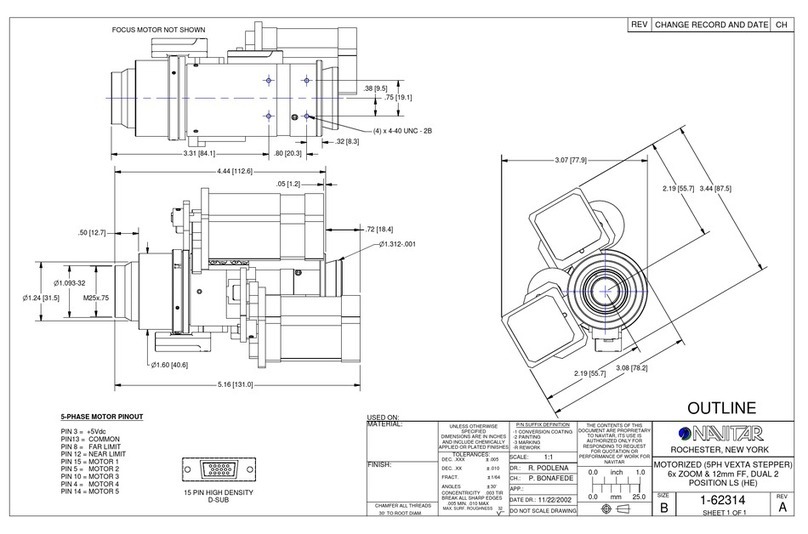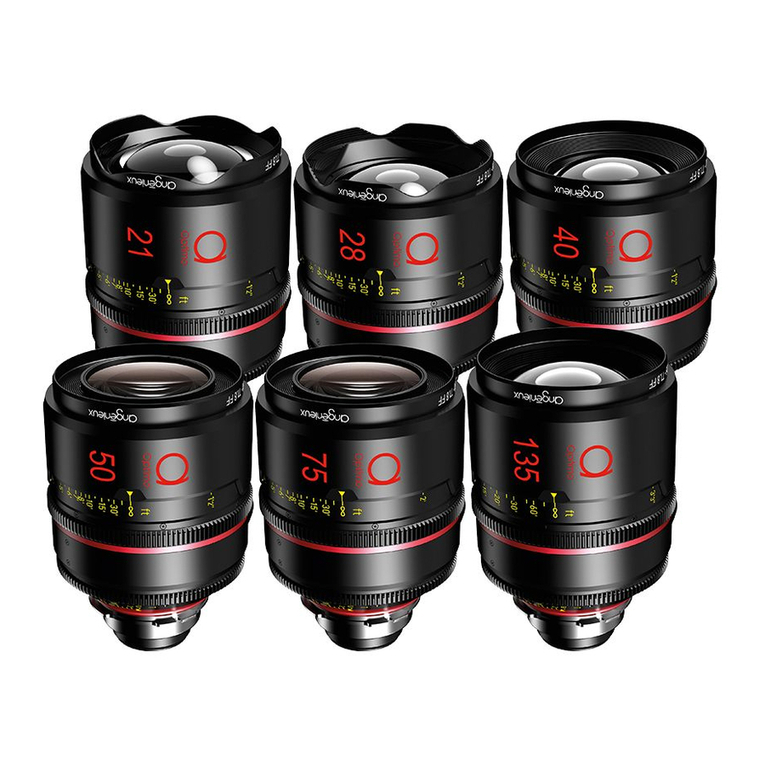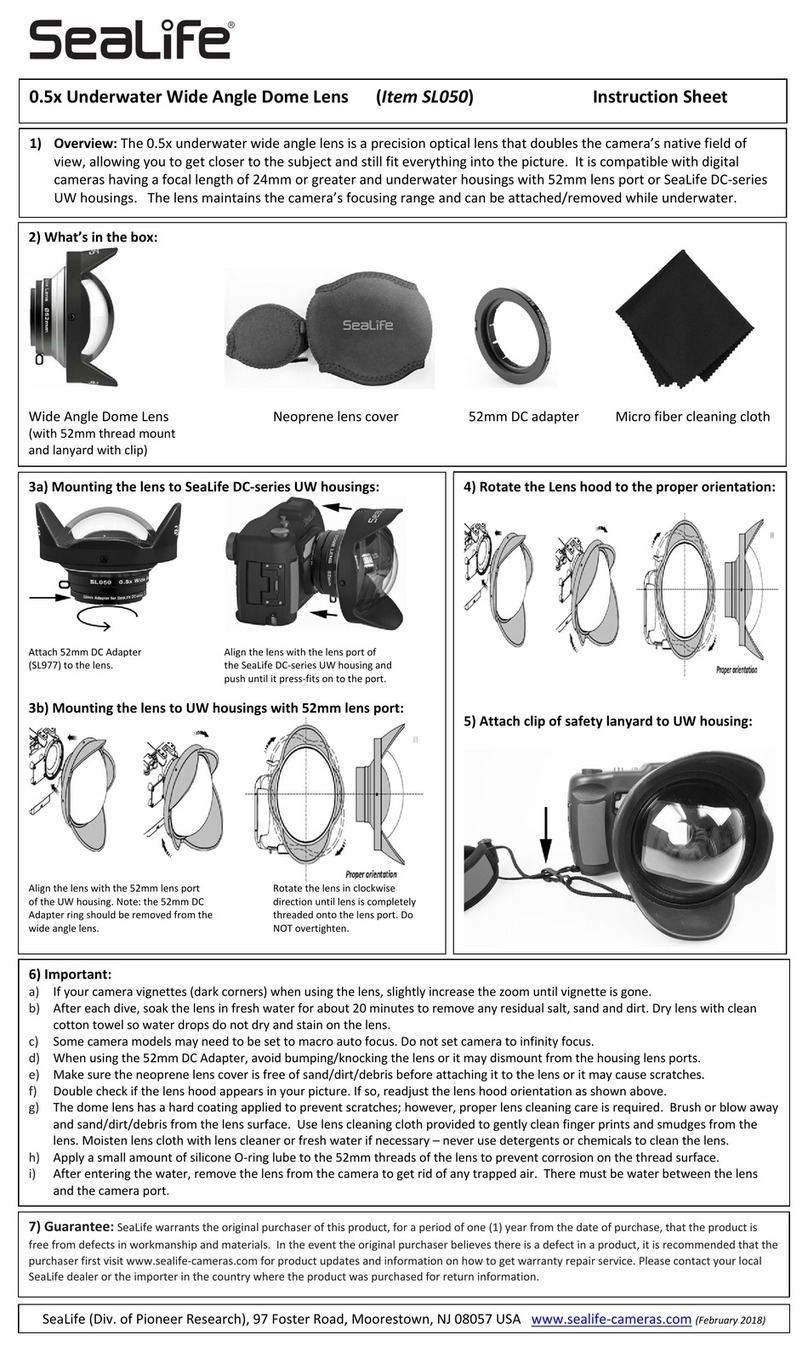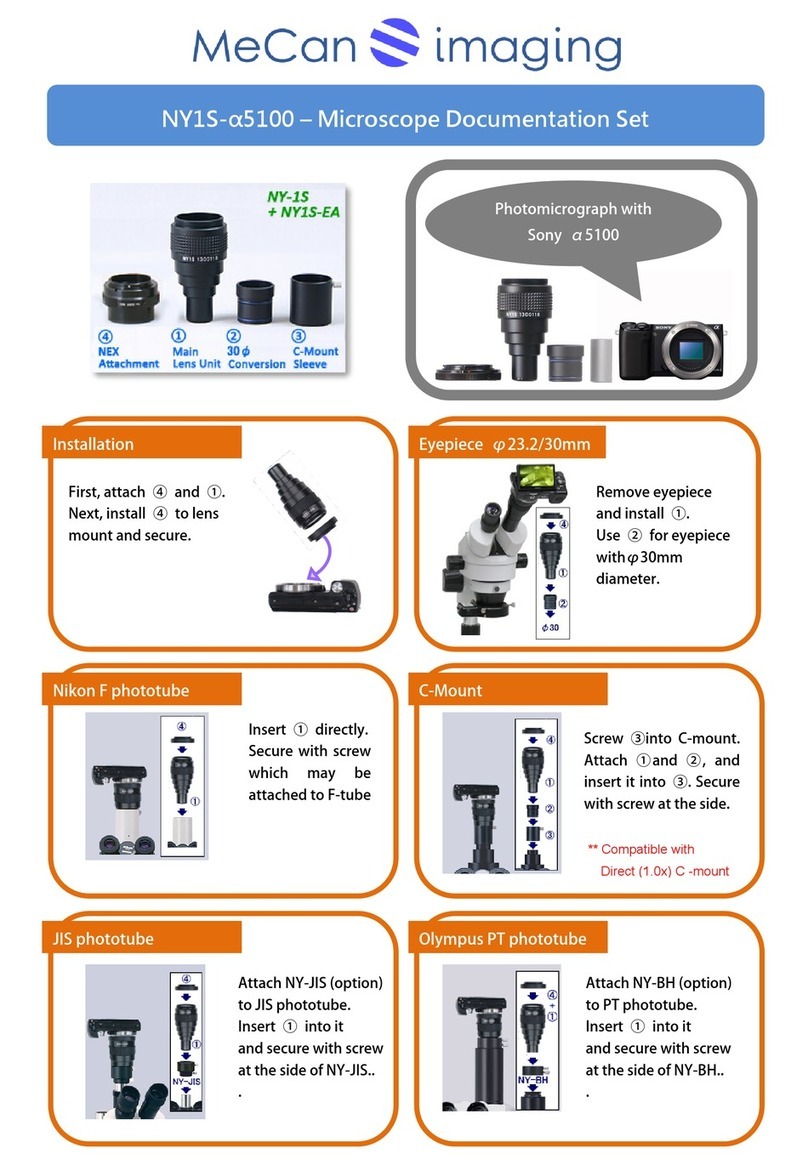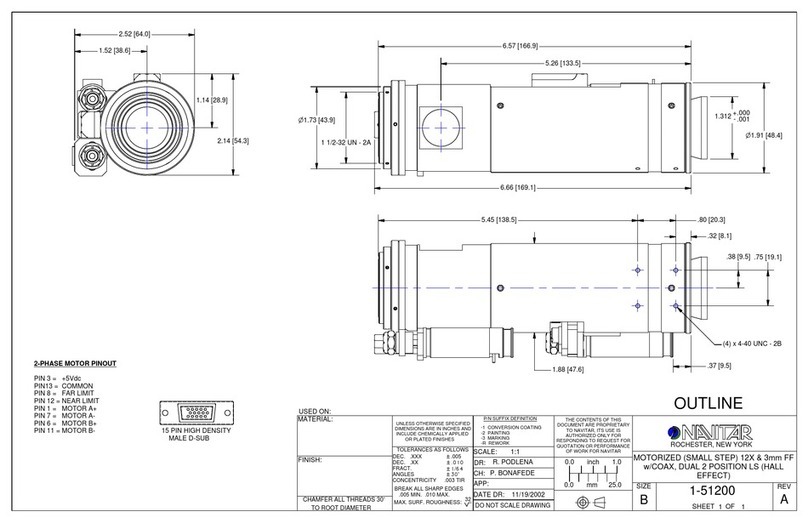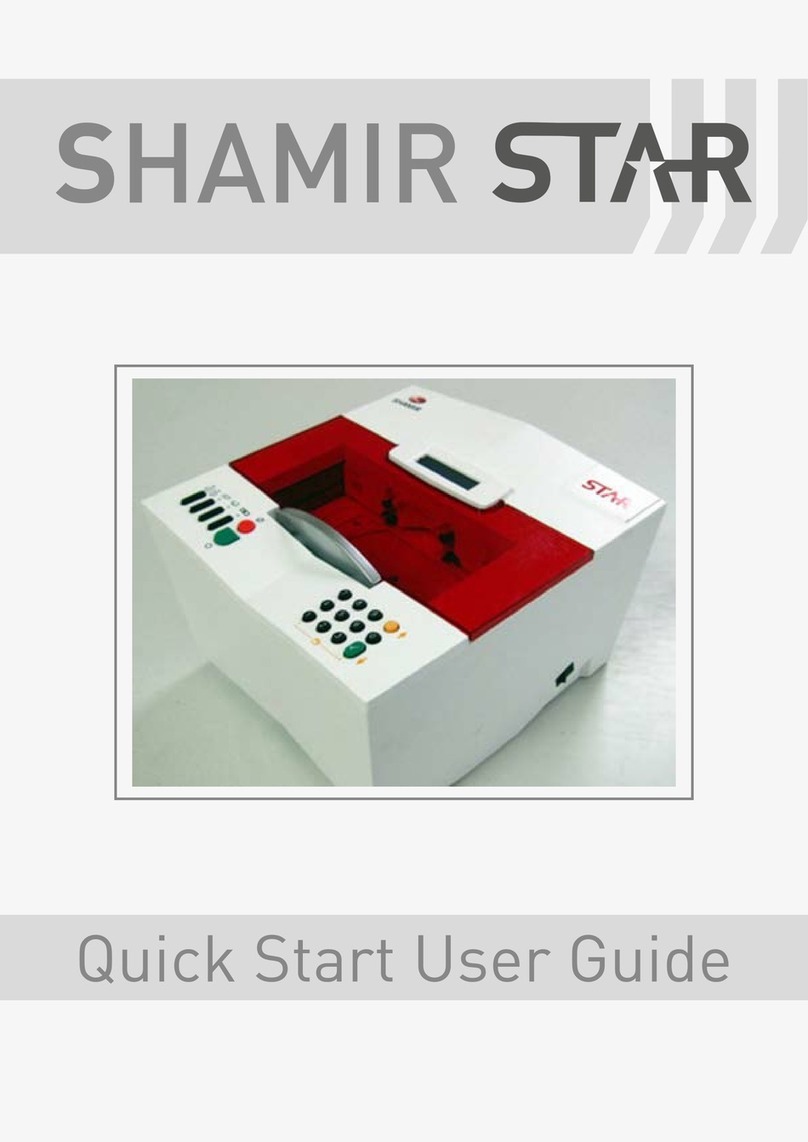
DOC026 Revision: 7 Revised Date: August 7 ,2022
Page 10 of 13
or mix lens care system unless indicated on solution labeling or as recommended by
your eyecare practitioner.
•Always carefully inspect lenses for cracks, or scratches, before inserting them into
the eye. Discomfort and injury may result if cracked or scratched lenses are placed
in the eye.
•Do not use saliva or anything other than the recommended solutions for lubricating
and rewetting lenses. Do not put lenses in the mouth.
•Lenses should be cleaned, rinsed, and disinfected each time they are removed.
Cleaning and rinsing are necessary to remove mucus and film from the lens surface.
Disinfecting is necessary to destroy harmful germs.
•Always remove, clean, rinse, and disinfect lenses according to a schedule prescribed
by your eyecare practitioner. The use of an enzyme or any cleaning solution does
not substitute for disinfecting.
•The eyecare practitioner should recommend a chemical care system (not heat) that
is appropriate for the Contact Lens for Daily Wear. Each lens care product contains
specific directions for use and important safety information, which should be read
and carefully followed.
Note: Some solutions may have more than one function, which will be indicated, on the
label. Read the label on the solution bottle and follow instructions.
Chemical Disinfecting Method:
•Clean one lens first (always the same lens to avoid mix-ups), rinse the lens
thoroughly with recommended saline or disinfecting solution to remove the
cleaning solution, mucus, and film from the lens surface, and put the lens into the
correct chamber of the lens storage case. Then repeat the procedure for the second
lens.
•After cleaning, disinfect lenses using the system recommended by the manufacture
and / or eyecare practitioner.
•To store lenses, disinfect and leave them in the closed case until ready to wear.
Lenses stored longer than 72 hours may require cleaning, rinsing and disinfecting
again for use. The patient should consult the instruction for use or the eyecare
practitioner for information on storage of lenses.
•After removing the lenses from the lens case, empty and rinse the lens storage case
with solution as recommended by the lens case manufacturer; then allow the lens
case to air dry. When the case is used again, refill it with fresh disinfecting/storage
solution. Replace lens case at regular intervals.
•Do not heat the disinfecting solution and lenses.
